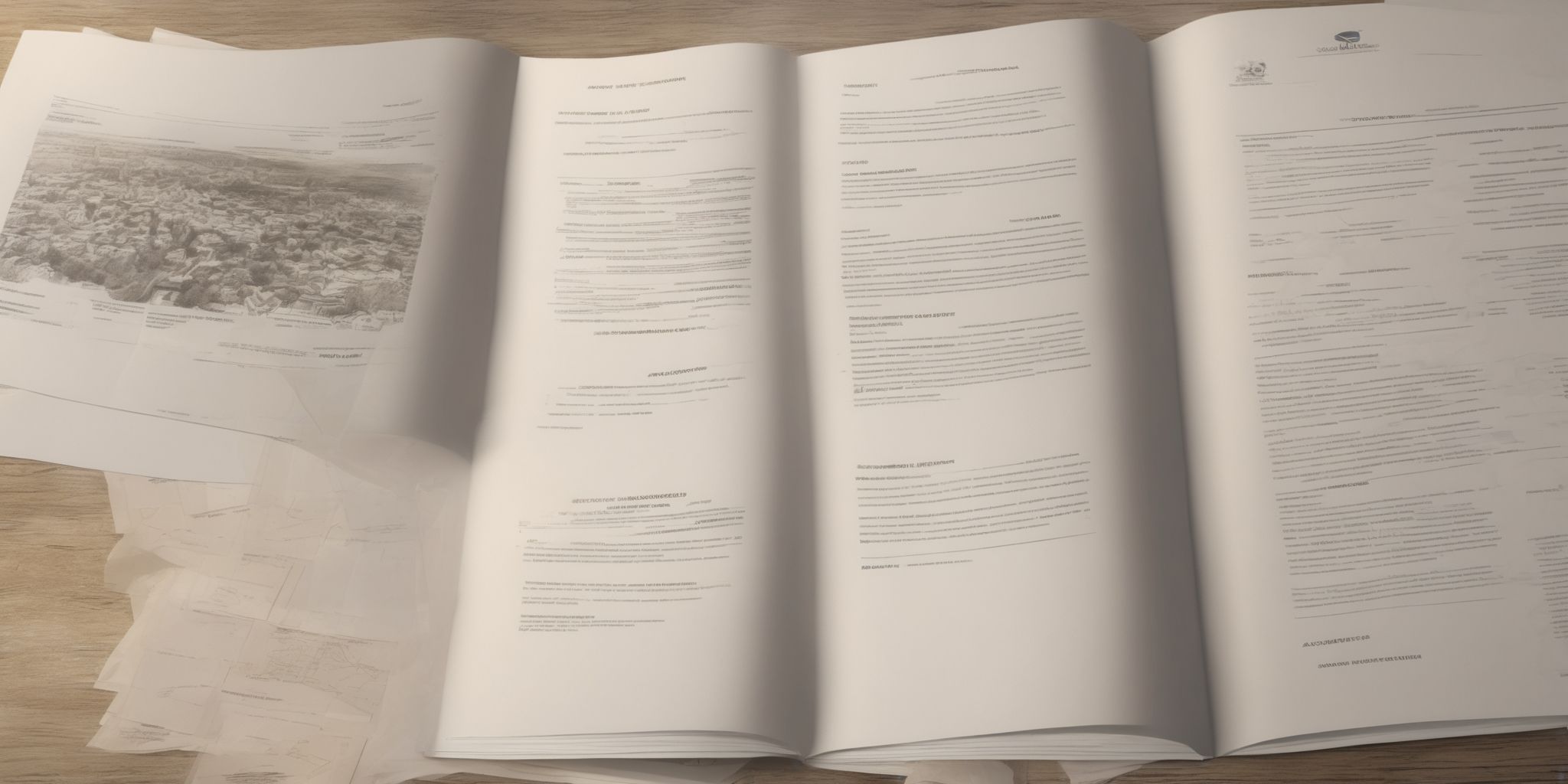What is a Depreciation?
Assets losing value over time is called depreciation. It happens because of wear and tear, obsolescence, or age.
This concept is crucial for businesses and individuals with assets because it influences financial decisions and asset management strategies.
Let's dive into depreciation and why it's important for effective asset management.
Definition of Depreciation
Depreciation in accounting and finance means spreading out the cost of an asset over its useful life. This helps businesses show the decrease in value of fixed assets on their balance sheets.
Businesses can use methods like straight-line or double-declining balance to allocate an asset's expense over several periods. The main components of depreciation are asset cost, salvage value, useful life, and chosen depreciation method.
The IRS gives guidelines on reporting depreciation in tax returns, which affect taxable income. For instance, IRS rules allow depreciating a rental property used for business over 27.5 years.
Small businesses often use depreciation to deduct equipment or property costs, reducing taxable income and boosting cash flow.
Types of Depreciation
Straight-Line Method
The straight-line method of depreciation is easy to calculate.
It involves subtracting the salvage value from the asset cost and then dividing that number by the asset's useful life in years.
This method spreads out the depreciation expense evenly over the asset's useful life.
It helps businesses track the decrease in value of their assets over time.
Small businesses often prefer this method because it's simple and great for tangible assets like equipment or rental property.
However, one limitation is that it doesn't consider actual asset usage or production levels.
This oversight could lead to inaccuracies in the depreciation expense reported on the income statement.
Compared to other methods like double-declining balance or units of production, the straight-line method is consistent.
It offers a straightforward way to allocate depreciation expense without fluctuations in the reporting period.
Different depreciation methods impact how a business reports its financial position.
In the balance sheet, accumulated depreciation reduces the asset's book value over time.
Double-Declining Balance Method
The Double-Declining Balance Method is different from the Straight-Line Method in calculating depreciation. It focuses on accelerating depreciation expense in the early years of an asset's life. This means higher depreciation expenses initially due to more wear and tear on the asset.
Advantages of the Double-Declining Balance Method include quicker write-off of the asset's cost and potential tax benefits from higher early depreciation expenses. However, a disadvantage is lower book value of assets later, affecting financial ratios and possibly overstating expenses long term.
Using the Double-Declining Balance Method can lead to lower net income early on, impacting reported income, taxes, and overall financial standing on the balance sheet. Accurate financial reporting and decision-making rely on understanding these impacts.
Units of Production Method
The Units of Production Method calculates depreciation based on how much an asset is used. This is different from other methods that calculate depreciation based on time or straight-line calculations.
Important factors for calculating depreciation using this method include the asset cost, estimated useful life in terms of activity, and any salvage value at the end of its useful life.
To calculate depreciation using this method, divide the asset cost minus salvage value by the total expected units of activity over its useful life.
This method is commonly used for assets like equipment, rental properties, or service vehicles that have varying levels of use each year.
It provides a more accurate representation of how much value the asset is consuming based on actual usage. Some businesses prefer this method for tax purposes and financial reporting on the balance sheet and income statement.
Calculation Examples
The straight-line method of depreciation is simple. Just divide the asset's cost by its useful life to find the yearly depreciation expense.
For example, a $10,000 bouncy castle with a 5-year life means $2,000 depreciation yearly.
On the other hand, the double-declining balance method speeds up depreciation. It takes double the straight-line rate in the first year, reducing the asset value faster. Small businesses benefit as it shows higher depreciation early on.
The units of production method considers how much an asset is used. It's useful for machinery or equipment used irregularly in service industries.
Correctly reporting depreciation ensures compliance with IRS rules and shows accurate asset values in financial statements.
Depreciable Assets
An asset can be classified as depreciable if it meets certain criteria:
- It has a determinable cost.
- Its useful life exceeds one year.
- It experiences a loss of value over time.
The useful life of such an asset is determined considering factors like wear and tear, obsolescence, and expected usage.
Different methods can be used to calculate depreciation, including:
- Straight-line depreciation method,
- Double-declining-balance method, and
- MACRS method.
These methods help spread the asset's cost over its useful life, generating a depreciation expense that appears on the company's income statement and balance sheet.
By reporting depreciation, a company can:
- Reflect the decline in value of its fixed assets,
- Comply with IRS regulations, and
- Optimize tax returns.
Small businesses benefit from depreciation write-offs for assets like equipment, rental properties, and bouncy castles. This helps them:
- Manage cash flow and
- Reduce taxable income.
Accounting for Depreciation
Depreciation is calculated using the straight-line method. This involves finding the difference between the asset's cost and salvage value, then dividing by its useful life in years.
The straight-line method evenly spreads the expense over the asset's useful life, ensuring a consistent depreciation expense each year.
Different depreciation methods have varying tax implications. Some methods, like the double-declining balance method, allow for accelerated depreciation in the early years of an asset's life.
The salvage value, which is the estimated value of an asset at the end of its useful life, affects depreciation calculations by reducing the total depreciable amount.
Businesses need to understand depreciation to accurately report the decreasing value of assets on financial statements like the balance sheet.
By accounting for depreciation correctly, companies can allocate expenses over the periods in which assets generate revenue. This helps to match income with related costs.
Accumulated Depreciation
Accumulated depreciation is calculated by subtracting the salvage value from the cost of an asset. This determines the total depreciation expense over its useful life.
Financial accounting uses this process to spread the cost of an asset over its expected years of service. The impact is visible on the balance sheet, where it reduces the asset's book value showing decreased value from wear and tear.
This adjustment affects the income statement by increasing depreciation expense, which then lowers taxable income. Salvage value is the estimated value an asset will have at the end of its useful life. It helps in depreciation calculations by deciding how much of the asset's cost is spread over the years.
Understanding accumulated depreciation is important for small businesses. It helps them accurately report depreciation on fixed assets like equipment or rental properties, leading to precise financial statements and tax returns.
Salvage Value and Depreciation
When considering asset depreciation, the salvage value is important. Salvage value is the estimated value an asset will have at the end of its life. This value is subtracted from the asset's cost to calculate the depreciable base.
A higher salvage value means lower yearly depreciation expenses. The salvage value can change, affecting depreciation. For instance, an asset's salvage value may decrease due to technology advancements or wear and tear.
Different methods exist to determine salvage value, like analyzing market trends or getting appraisals. Accurately estimating salvage value is crucial for businesses to report depreciation correctly and keep precise financial records.
Declining Balance Depreciation
The Declining Balance Depreciation method is different from the Straight-Line method.
This method spreads the cost of an asset over its useful life.
In contrast, the Straight-Line method depreciates the asset's cost evenly each year.
The Declining Balance method accelerates the depreciation expense.
It allows for higher depreciation in the early years and lower in the later years.
When choosing the Double-Declining Balance method, factors to consider are:
- The asset's useful life
- Salvage value
- Depreciation rate over time
This method reduces the book value of the asset faster compared to Straight-Line depreciation.
It lowers the reported value on the balance sheet over time.
Businesses use this method to speed up depreciation expenses for tax reasons.
It helps better match the asset's actual wear and tear.
ACRS (Accelerated Cost Recovery System)
ACRS, or Accelerated Cost Recovery System, is a method used for the depreciation of assets. It includes equipment or rental property over a specific period. The purpose of ACRS is to allocate the cost of an asset over its useful life. This accurately reflects its decreasing value.
Compared to straight-line depreciation, ACRS allows for larger depreciation expenses in earlier years. This reflects the rapid decrease in an asset's value. ACRS differs from other methods like the double-declining balance method. This method front-loads depreciation but at a faster rate.
ACRS impacts tax implications by affecting the amount of depreciation expense a company can deduct on their tax return. Due to its accelerated nature, ACRS can result in greater tax deductions in the early years of an asset's use. This improves cash flow for small businesses. In turn, this can lower a company's taxable income and increase their overall revenue.
For businesses looking to maximize write-offs and manage cash flow efficiently, ACRS provides a practical approach to asset depreciation. This aligns with IRS guidelines.
Tax Implications of Depreciation
Depreciation impacts taxable income for businesses. By spreading the cost of an asset over its useful life, companies deduct a portion of the cost each year as depreciation expense on their tax return. This deduction reduces taxable income, leading to lower tax liabilities.
Accelerated depreciation methods like the Modified Accelerated Cost Recovery System (MACRS) or the double-declining balance method can provide tax benefits by allowing higher depreciation expenses in the earlier years of an asset's life.
When a depreciated asset is disposed of, the gain or loss between its book value and salvage value is reported on the company's tax return. This gain or loss can impact the overall tax liabilities of the business.
Understanding how depreciation and asset disposal affect tax obligations is important. It helps businesses accurately report income and expenses to the IRS.
Carrying Value of an Asset
The carrying value of an asset is influenced by several factors. These include the initial cost of the asset, its useful life, salvage value, and the method of depreciation used.
Let's consider a business that owns rental property, like a bouncy castle rental company. The asset cost of the bouncy castle, its estimated useful life, and the expected salvage value all play a role in determining the carrying value on the balance sheet.
Depreciation, whether calculated using straight-line depreciation or the double-declining balance method, impacts the carrying value over time. It does this by systematically allocating the cost of the asset as an expense against the company's revenue.
Small businesses need to accurately report the depreciation expense on their tax return as required by the IRS. As the asset continues to be used over the years, accumulated depreciation increases, lowering the asset's book value on the balance sheet.
For the company’s financial statements to be accurate, they must reflect the carrying value of fixed assets correctly. This helps avoid any impairment or write-offs in the future.
Summary
Depreciation means an asset loses value over time. It's a way accountants spread an asset's cost over its life.
Businesses can show how their assets lose value accurately in financial statements.
Different ways to calculate depreciation include straight-line, accelerated, and units of production methods.
FAQ
What is depreciation?
Depreciation is the gradual decrease in value of an asset over time. It is typically recorded as an expense on a company's income statement to reflect the wear and tear of an asset, such as buildings, vehicles, or equipment.
Why is depreciation important for businesses?
Depreciation is important for businesses because it allows for the accurate allocation of costs over the useful life of assets, helping to determine the true profitability of the business and making informed decisions on asset replacement and budgeting.
For example, a company can use depreciation to budget for future equipment upgrades based on the estimated decrease in value over time.
How is depreciation calculated?
Depreciation is calculated by dividing the asset's initial cost by its useful life. For example, if a vehicle costs $20,000 and has a 5-year useful life, the annual depreciation would be $4,000 ($20,000 / 5 years).
What are the different methods of depreciation?
The different methods of depreciation include straight-line, double declining balance, units of production, and sum-of-the-years' digits. Straight-line depreciates assets evenly over their useful life, double declining balance accelerates depreciation in the early years, units of production depreciates based on usage, and sum-of-the-years' digits accelerates depreciation.
How does depreciation affect the value of an asset over time?
Depreciation reduces the value of an asset over time by accounting for wear and tear or obsolescence. For example, a car loses value each year due to usage and aging, affecting its resale value.


